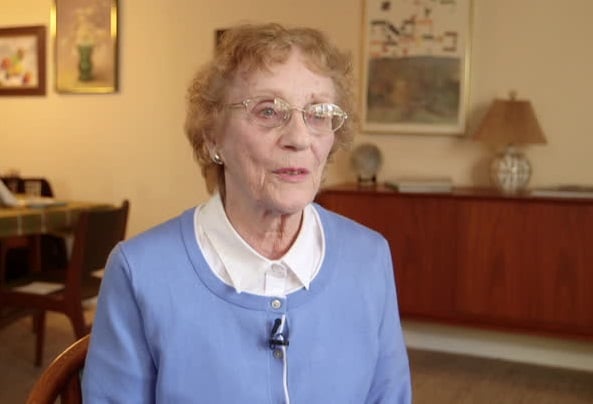- Step-by-step procedures
- Estimated completion time
- Resources labeled by icons






 direct teachers to the piece of content named in the procedures
direct teachers to the piece of content named in the procedures - Print-ready pages as indicated by
 are available as PDFs for download
are available as PDFs for download  located above “KEY WORDS” to access student handouts and vocabulary in Spanish
located above “KEY WORDS” to access student handouts and vocabulary in Spanish- Subtitles/CC [ found in
 ] available in Spanish and English for testimonies
] available in Spanish and English for testimonies
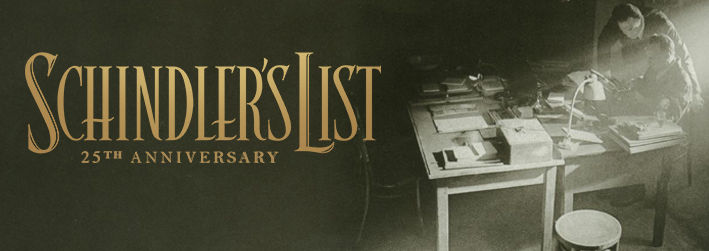
In honor of Universal Pictures’ rerelease of Schindler’s List, Echoes & Reflections has created a short, classroom-ready Companion Resource, that will help educators to provide important historical background and context to the film, as well as explore powerful true stories of rescue, survival, and resilience with their students.
Additionally, the following videos, recorded at Yad Vashem, feature Schindler survivors who speak of the impact Oskar Schindler had on their lives.
EVA LAVI TESTIMONY
NAHUM & GENIA MANOR
The posters feature the powerful words and experiences of Holocaust survivor and memoirist Elie Wiesel, Holocaust survivor Kurt Messerschmidt, and Anne Frank rescuer, Miep Gies. Each poster promotes meaningful conversation and reflection in the classroom, whether in person or in a virtual setting, and inspires students with powerful human stories of the Holocaust that can continue to guide agency and action as a result of studying this topic.
To support you in these efforts, we have also compiled several suggested classroom activities from teachers in our network that may be of use and interest.
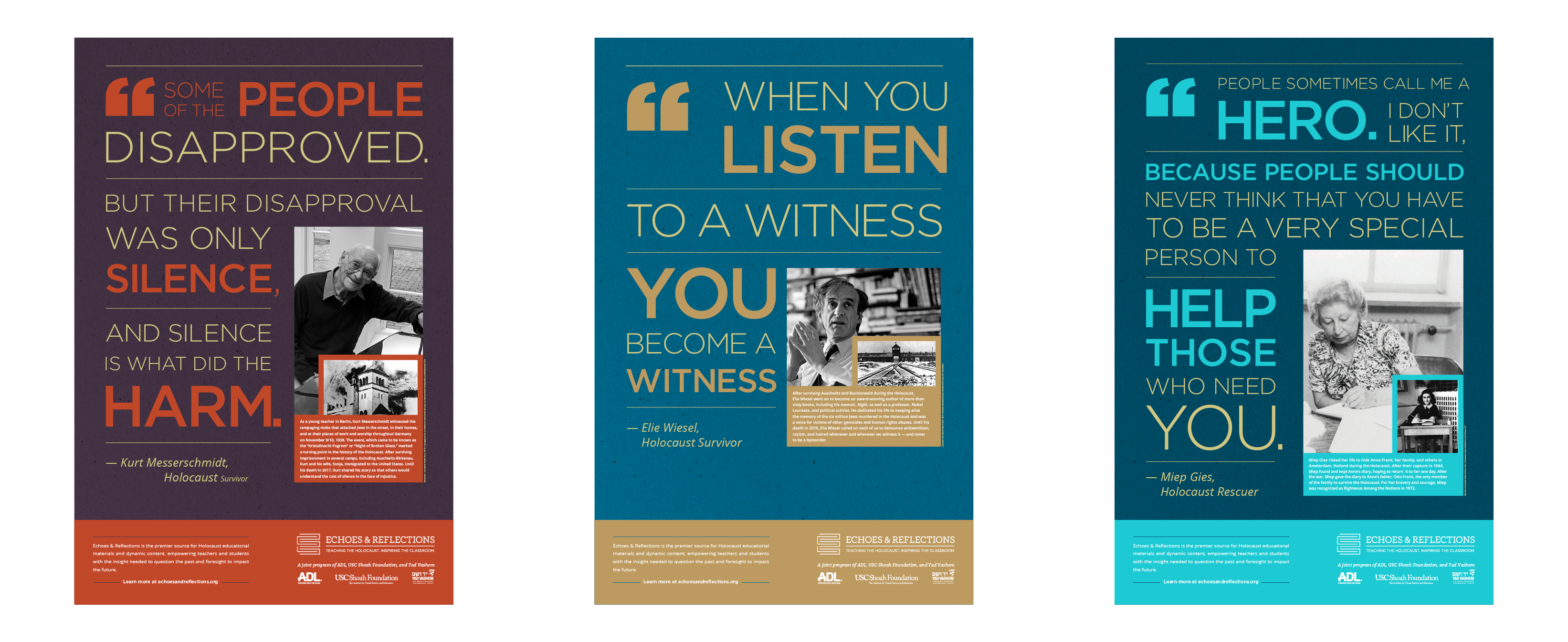
Please fill out the form below to access and download your PDF posters.

USC Shoah Foundation’s first podcast, We Share The Same Sky, seeks to brings the past into present through a granddaughter’s decade-long journey to retrace her grandmother’s story of survival. We Share The Same Sky tells the two stories of these women—the grandmother, Hana, a refugee who remained one step ahead of the Nazis at every turn, and the granddaughter, Rachael, on a search to retrace her grandmother’s history.
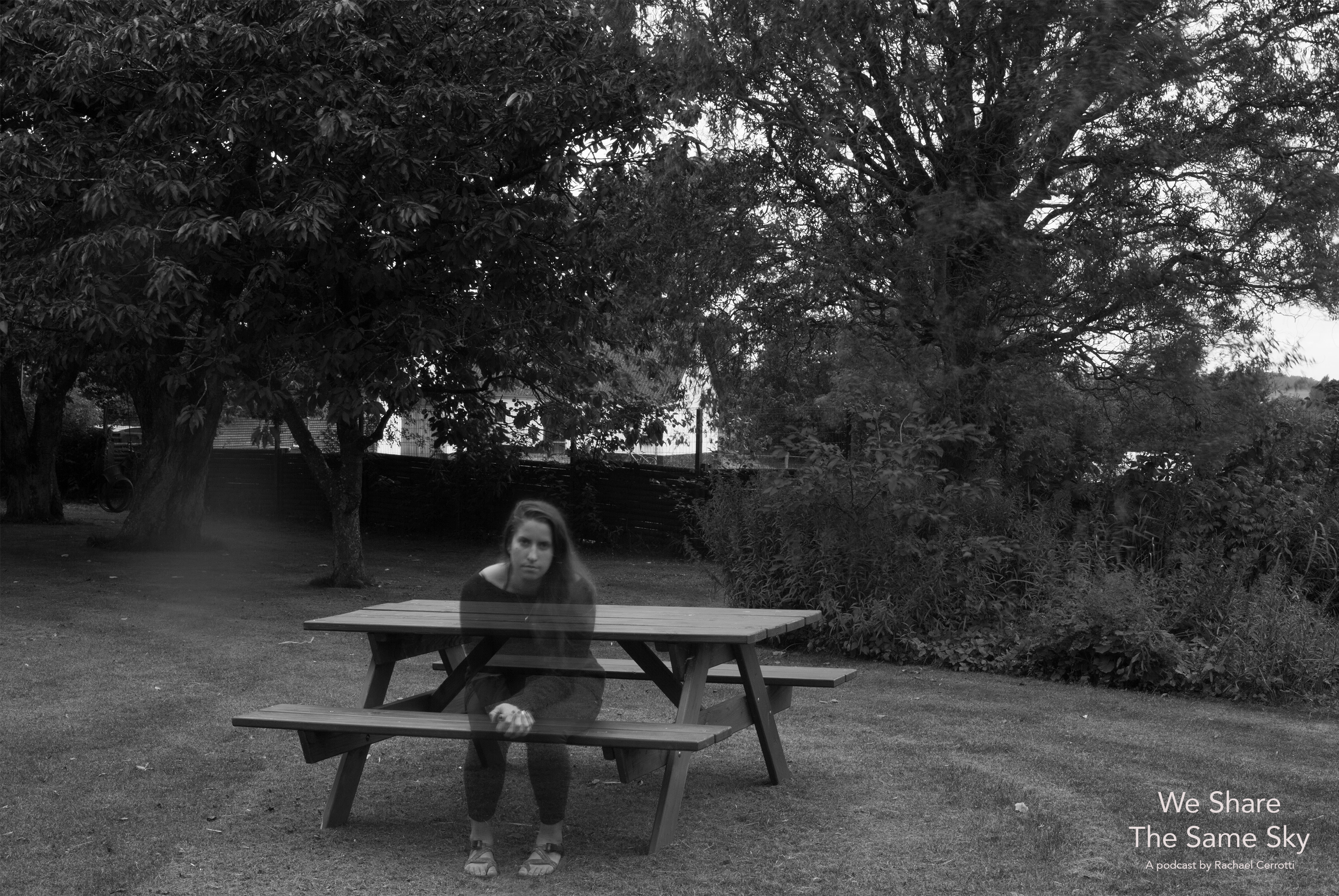
A self-portrait of Rachael while she is living on a Danish farm that is owned by the granddaughter of Hana’s foster mother from World War II. Photo by Rachael Cerrotti, 2017
In order to enhance its classroom use, USC Shoah Foundation and Echoes & Reflections have created a Companion Educational Resource to support teachers as they introduce the podcast to their students. This document provides essential questions for students, as well as additional resources and content to help build context and framing for students’ understanding of the historical events addressed in the podcast.
Access to the podcast, as well as additional supporting materials—including IWitness student activities, academic standards alignment, and general strategies for teaching with podcasts—can all be found at the We Share The Same Sky page in IWitness.
Note: Due to the subject nature, the podcast is appropriate for older students, grades 10-12. As always, teachers should review the content fully in advance to determine its appropriateness for their student population.

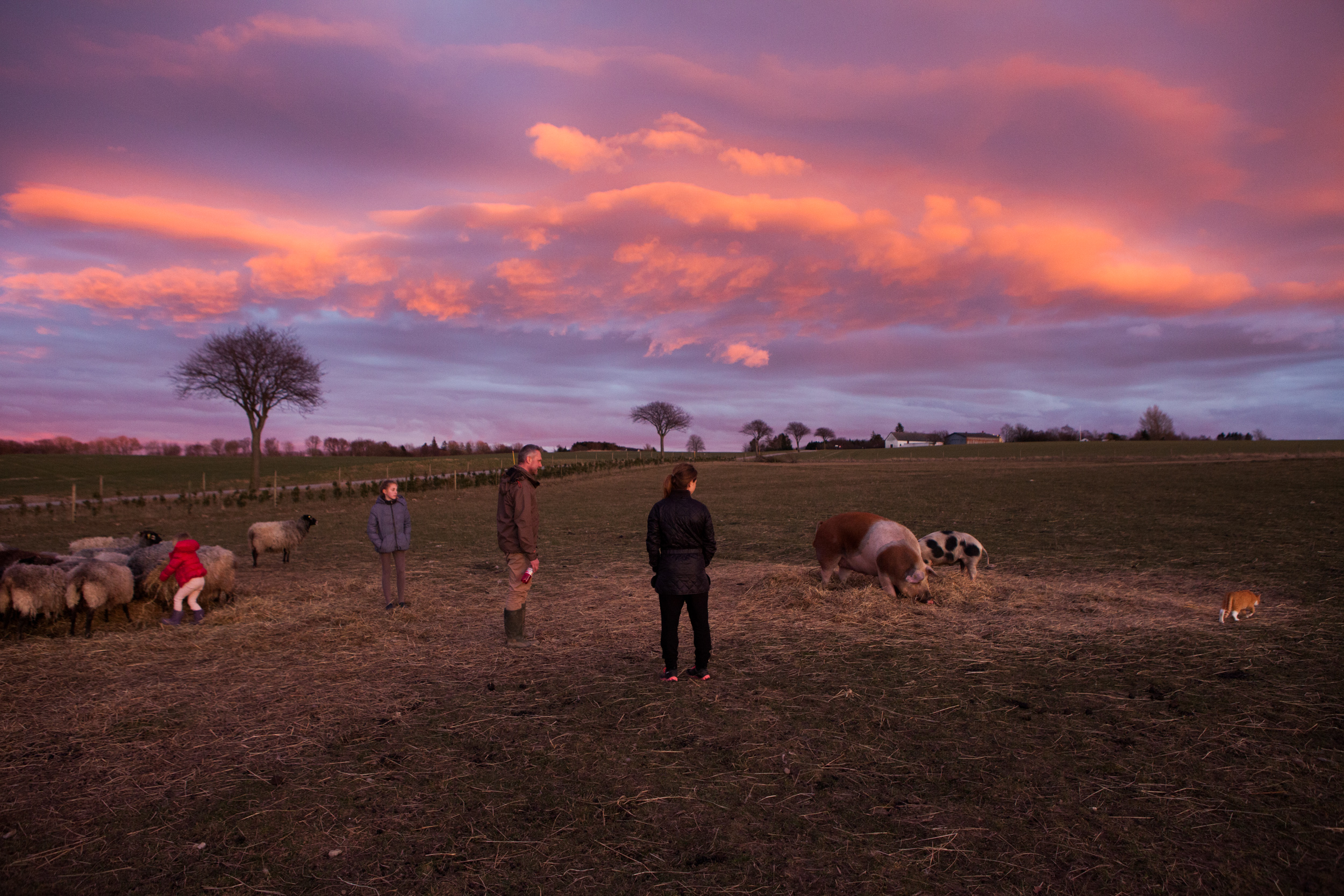
After many years of research and digitizing the archive her grandmother left behind, Rachael set out to retrace her grandmother’s 17 years of statelessness. Her intention was to travel via the same modes of transportation and to live similar style lives as to what her grandmother did during the war and in the years after. That meant that when she got to Denmark, she moved to a farm. Rachael moved in with the granddaughter of her grandmother’s foster mother from World War II and traded her labor for room and board as Hana once did. This picture is from that first visit in the winter of 2015. Since this time, Rachael has spent many more months living on this farm. It is owned by Sine Christiansen and her family. Sine is the granddaughter of Jensine, one Hana’s foster mother from World War II. Photo by Rachael Cerrotti, 2015

A self portrait of Rachael overlooking the exact spot in Southern Sweden where her grandmother’s refugee boat came to shore in 1943. Photo by Rachael Cerrotti, 2016


60 - 90 minutes
60 - 90 minutes
LESSON 2: What is Antisemitism and What are Features of Antisemitism?
Utilizing expertise from scholars and examples of historic and current antisemitism, this lesson seeks to help students to define and identify some of the essential features of antisemitism, particularly its enduring nature and ability to be manipulated in times of fear and uncertainty.
| 1 | Students turn and talk to a partner about what the term antisemitism means to them. The handout, Antisemitism, is distributed or displayed and students discuss together, noting similarities to or differences from their personal definitions. Students learn that antisemitism is latent in parts of society, often laying relatively dormant until periods of social unrest when it can ignite. |
| 2 | In pairs, students are assigned one of the two sections below. After completing the Features of Antisemitism graphic organizer about the videos they watched, students switch partners and share their findings with their new partner who watched the other videos.
|
| 3 | As a culminating activity, in groups or as an entire class, students discuss the following questions: |
|
|
| 4 | Students learn that they will investigate the ways in which antisemitism has been expressed over time and its connection to current manifestations in the world today. Students learn that antisemitism is latent in certain parts of society, often surges in times of fear and uncertainty (although it may surge in other contexts as well), and often functions as a skewed worldview that makes people vulnerable to conspiracy theories. Students view the testimony of [L]Anita Lasker Wallfisch[/L] and the interview with [L]Dr. Dave Rich[/L] and discuss the following questions: |
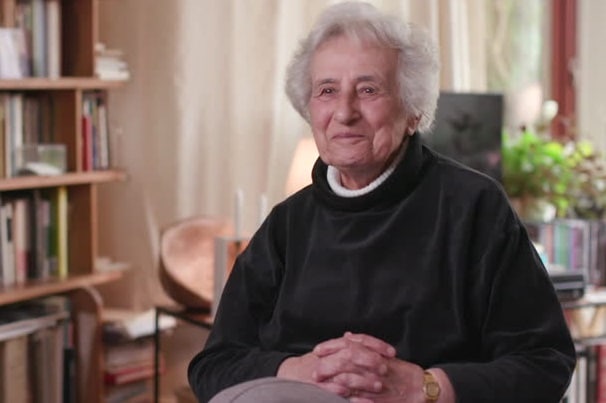
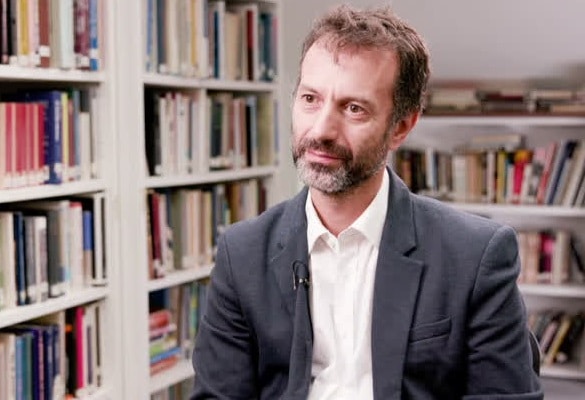


|
|
| 5 | The handout, The Through Lines of Antisemitism, is distributed and students review the directions. In small groups, they prepare for the exercise by replicating the chart from the handout on large sheets of chart paper or other format. They then proceed as follows: |
The Through Lines of Antisemitism View More »
Antisemitism Over Time View More »
Antisemitic Words and Images View More »
- Part 1 – Historical Survey: Small groups are assigned at least one of the six sources in the handout, Antisemitism Over Time, which tracks some of the ways antisemitism has manifested over the past century. Groups review the assigned source(s) and add notes to their chart.
- Part 2 – Contemporary Examples: Small groups are assigned at least one statement and one visual from the Antisemitic Words and Images handout, which focuses on modern-day examples of antisemitism. As students review, they add notes to their chart, paying attention to the ways in which the contemporary manifestations are similar to and distinct from the historical case studies.
OPTIONAL: Consult the historical antisemitic tropes: antisemitism.adl.org
| 6 | When groups have finished, students post their charts so they are visible to the whole class. Volunteers share back or highlight significant facts or ideas from the sources. The following questions are discussed: |
|
|
| 7 | The quotes below from historian and Ambassador Deborah Lipstadt, Special Envoy to Monitor and Combat Antisemitism, and Rabbi Lord Jonathan Sacks, former chief rabbi of Britain, are posted. Students journal in reflection of this lesson using the following prompts: “How has the blaming of Jews for the ills of society and the belief in conspiracy theories fueled antisemitism in the past and today? How does believing in antisemitic myths harm a person, a community, and society?” |
“Antisemitism is not simply the hatred of something ‘foreign,’ but the hatred of a perpetual evil in the world. Jews are not an enemy but the ultimate enemy.”
“The hate that begins with Jews does not end with Jews.”
60 - 90 minutes
60 - 90 minutes
LESSON 2: What is Antisemitism and What are Features of Antisemitism?
Utilizing expertise from scholars and examples of historic and current antisemitism, this lesson seeks to help students to define and identify some of the essential features of antisemitism, particularly its enduring nature and ability to be manipulated in times of fear and uncertainty.
| 1 | Students turn and talk to a partner about what the term antisemitism means to them. The handout, Antisemitism, is distributed or displayed and students discuss together, noting similarities to or differences from their personal definitions. Students learn that antisemitism is latent in parts of society, often laying relatively dormant until periods of social unrest when it can ignite. |
| 2 | In pairs, students are assigned one of the two sections below. After completing the Features of Antisemitism graphic organizer about the videos they watched, students switch partners and share their findings with their new partner who watched the other videos.
|
| 3 | As a culminating activity, in groups or as an entire class, students discuss the following questions: |
|
|
| 4 | Students learn that they will investigate the ways in which antisemitism has been expressed over time and its connection to current manifestations in the world today. Students learn that antisemitism is latent in certain parts of society, often surges in times of fear and uncertainty (although it may surge in other contexts as well), and often functions as a skewed worldview that makes people vulnerable to conspiracy theories. Students view the testimony of [L]Anita Lasker Wallfisch[/L] and the interview with [L]Dr. Dave Rich[/L] and discuss the following questions: |




|
|
| 5 | The handout, The Through Lines of Antisemitism, is distributed and students review the directions. In small groups, they prepare for the exercise by replicating the chart from the handout on large sheets of chart paper or other format. They then proceed as follows: |
The Through Lines of Antisemitism View More »
Antisemitism Over Time View More »
Antisemitic Words and Images View More »
- Part 1 – Historical Survey: Small groups are assigned at least one of the six sources in the handout, Antisemitism Over Time, which tracks some of the ways antisemitism has manifested over the past century. Groups review the assigned source(s) and add notes to their chart.
- Part 2 – Contemporary Examples: Small groups are assigned at least one statement and one visual from the Antisemitic Words and Images handout, which focuses on modern-day examples of antisemitism. As students review, they add notes to their chart, paying attention to the ways in which the contemporary manifestations are similar to and distinct from the historical case studies.
OPTIONAL: Consult the historical antisemitic tropes: antisemitism.adl.org
| 6 | When groups have finished, students post their charts so they are visible to the whole class. Volunteers share back or highlight significant facts or ideas from the sources. The following questions are discussed: |
|
|
| 7 | The quotes below from historian and Ambassador Deborah Lipstadt, Special Envoy to Monitor and Combat Antisemitism, and Rabbi Lord Jonathan Sacks, former chief rabbi of Britain, are posted. Students journal in reflection of this lesson using the following prompts: “How has the blaming of Jews for the ills of society and the belief in conspiracy theories fueled antisemitism in the past and today? How does believing in antisemitic myths harm a person, a community, and society?” |
“Antisemitism is not simply the hatred of something ‘foreign,’ but the hatred of a perpetual evil in the world. Jews are not an enemy but the ultimate enemy.”
“The hate that begins with Jews does not end with Jews.”
150-180 minutes
150-180 minutes
LESSON 3: What are Some of the Forces that Drive Antisemitism Today?
In this lesson, students learn how antisemitism has frequently been used as a political weapon to attack opponents, gather support, and ultimately to gain power and influence. Invoking the Holocaust in order to misuse it is a particularly disturbing tactic that denies, distorts, and trivializes the horrors of the Holocaust. Students discover the dangers of allowing hate speech to go unchecked in which antisemitism can spread quickly and lead to real world violence.
| 1 | Students share any prior knowledge they may have about the Tree of Life Synagogue attack that took place in Pittsburgh in 2018. The following background is shared as needed:
|
| 2 | The Tree of Life Synagogue Attack Word Cloud handout is projected or distributed. The word cloud reflects some of the language the assailant posted online in the lead-up to the attack. In pairs or small groups, students analyze the language for clues about what might have fueled his irrational hatred and they identify traditional antisemitic themes. As a class, students discuss their findings. The following themes are considered: |
Arbol de la Vida Ataque a una Sinagoga Nube de Palabras Ver más »
View More »
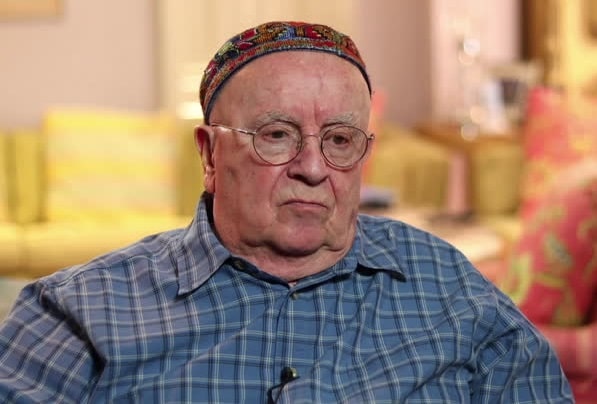
|
|
To conclude this activity, students view the testimony of Judah Samet (bio), a Holocaust survivor and a member of the Tree of Life Congregation at the time of the attack. After watching, students discuss some or all of the following questions:
|
|
| 3 | Students view the video, Eric Ward on Antisemitism at the Heart of White Nationalism and then review the student handout, The History of White Supremacist Groups in America. Students learn that an increase in white nationalism–such as that exhibited by Bowers as well as attackers involved in the 2017 Charlottesville rally and 2019 Poway Synagogue shooting in CA–is one trend that both fuels contemporary antisemitism and demonstrates its most deadly consequence. Students discuss the following questions: |
|
|
| 4 | Students learn that, especially since the attack on Israel by Hamas on October 7, 2023, and the resulting war between Israel and Hamas, a significant and observable rise in antisemitism has manifested in the extreme political left. Influenced by multiple sources, including sources firmly outside of the political left, it is often centered on opposition to the State of Israel, sometimes because of certain policies and sometimes its right to exist at all. Students review the Brief History of Israel handout if necessary. |
| 5 | The handout, The Through Lines of Antisemitism, is distributed and students review the directions. In small groups, they prepare for the exercise by replicating the chart from the handout on large sheets of chart paper. They then proceed as follows: |
The Through Lines of Antisemitism View More »
Antisemitism That Finds Common Cause With the Extreme Left View More »
Modern Examples of Antisemitism That Find Common Cause with the Extreme Left View More »
Líneas Transversales del Antisemitismo Ver más »
Antisemitismo Que Encuentra una Causa Comun con la Extrema Izquierda Ver más »
Ejemplos Modernos de Antisemitismo en Causa Comun con la Extrema Izquierda Ver más »
- Section 1 – Historical Survey: Small groups are assigned at least one of the three sources in the handout, Antisemitism That Finds Common Cause With the Extreme Left, which tracks antisemitism from the fundamentalist, extremist Arab world (known as “Islamist antisemitism”) as well as the historic roots of antisemitism in the former Soviet Union and in liberation movements, that have found common cause with the Extreme Left in the United States.
- Section 2 – Contemporary Examples: Small groups are assigned at least one case study from the Modern Examples of Antisemitism That Find Common Cause with the Extreme Left, which focuses on modern-day examples of antisemitism. As students review, they add notes to their chart, paying attention to the ways in which the contemporary manifestations are similar to and distinct from the historical case studies.
| 6 | When groups have finished, they post their charts so that they are visible to the whole class. Volunteers share back or highlight significant facts or ideas from the sources. The following questions are discussed: |
|
|
| 7 | Students watch the testimony of [L]Liron Velleman[/L] and the interview with [L]Dr. Dave Rich[/L]. They discuss some or all of the following questions: |
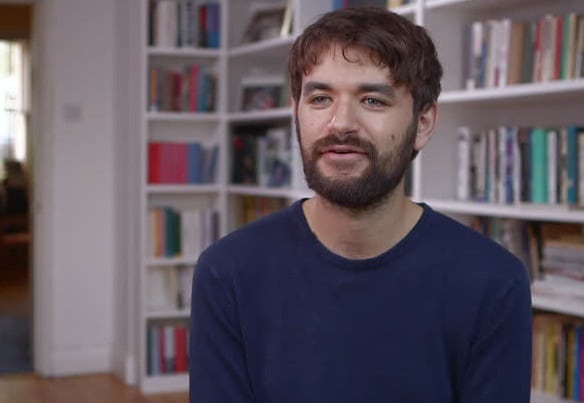



|
|
| 8 | Students reflect on the sources examined from the far right, far left, and Islamist antisemites which have become increasingly normalized throughout America, regardless of where one is on the political spectrum. Students view the interview with [L]Dr. Dave Rich[/L] who discusses research from Britain that examined antisemitic attitudes from the left, right, and throughout the political spectrum. Students discuss some or all of the following questions: |

View More »

View More »
|
|
| 9 | Students view the testimony of [L]Mohammed Dajani Daoudi[/L] and discuss the following questions: |
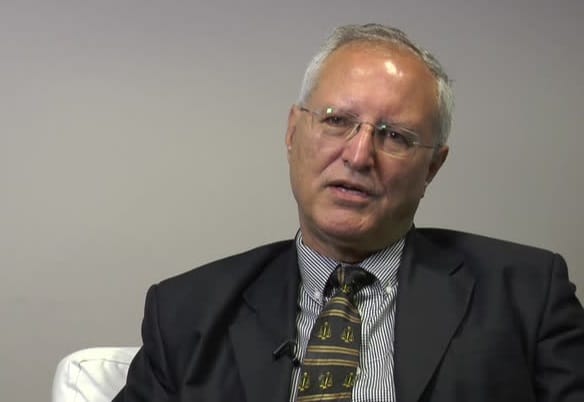

|
|
| 10 | Students define the words denial (the action of declaring something to be untrue), distortion (the action of giving a misleading account or impression), and inversion (the reversal of relationship). The handout, Holocaust Denial, Distortion, and Inversion is distributed and reviewed as a class. Students learn that denial, distortion, trivialization, and inversion of the Holocaust and of Jewish victimhood are often features of contemporary antisemitism. |
| 11 | Students view the video, Holocaust Denial, Explained, from the United States Holocaust Memorial Museum. They review the biographical information and testimonies of [L]Lillian Eckstein[/L] and [L]Felix Sparks[/L]. Students note the emotions of the interviewees, key words, and phrases that stand out to them, and thoughts and questions that come up as they listen. They discuss some or all of the following questions: |

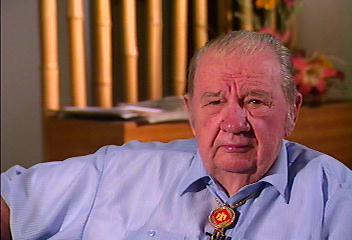


|
|
| 12 | Students create a “found poem” using the notes they took in response to the videos. To accomplish this, they choose at least ten key words and phrases from their notes that best describe the forces driving antisemitism today. They write each word or phrase on a separate slip of paper and arrange the slips into a poem that answers the supporting question and communicates their point of view. When students finish, they silently exchange their poems with peers in groups of three and attach written comments to one another’s work using sticky notes. |
60 minutes
60 minutes
LESSON 4: Action and Agency - Combating Antisemitism
In this lesson, students consider the skills and qualities needed to act effectively to advocate for Jewish people and combat antisemitism by reflecting on case studies and testimonies. They learn practical ways to respond to antisemitism in their communities and identify a range of actions they might take in response to real-life scenarios of antisemitism.
| 1 | The lesson begins with students reflecting on quotes from Miep Gies, one of Anne Frank’s rescuers, about courage and our responsibility to take action against prejudice and hate. Background information from the Miep Gies Quotes handout is shared with the class and some or all of the quotes from the handout are displayed around the room. Students walk around the room, reviewing the quotes and choosing one to stand by that resonates for them. In small groups, they discuss some of the following questions: |
|
|
| 2 | Students reflect on Miep Gies’ sentiment that even an ordinary person can “turn on a small light in a dark room.” They learn that, during this lesson, they will investigate ways that ordinary people (them!) can stand up against prejudice and intolerance in their communities. |
| 3 | Students identify people they know in their own lives or in public life or history who have worked for a more just society. They turn and talk to a partner about what they think enabled these people to help others. The handout, Profiles of Young Advocates, is distributed, which features stories of ordinary people who have embodied characteristics such as being proud of their identity, combating antisemitism, and building bridges between different groups of people. In small groups, students read at least one of the profiles and create a list of attributes and values that enabled that person or people to advocate for a better society.
|
| 4 | Students next practice applying some of the behaviors they have thought about to real-life scenarios. The handout, Action Planning, is distributed and the directions are reviewed together. In small groups students are assigned a scenario from the Taking Action: Scenarios for Discussion handout (or they select one that feels relevant to them). Students discuss the scenario using the questions provided and then complete the action planning grid in response to the scenario. |
Action Planning View more »
Taking Action: Scenarios for Discussion View more »
| 5 | When students have completed the task, they create new groups using the jig-saw method, so that each new group contains students who have worked on different scenarios. In their new groups, students report back on the highlights of their initial discussions and share the action plans they have devised. |
| 6 | Students review the biographies and view the testimonies of [L]Henry Oertelt[/L] and [L]Jair Melchior[/L], which emphasize the importance of creating understanding across our human differences and standing against all forms of prejudice. They discuss some or all of the following questions: |
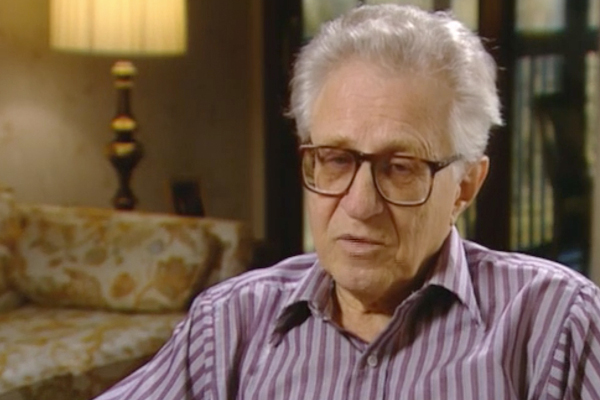
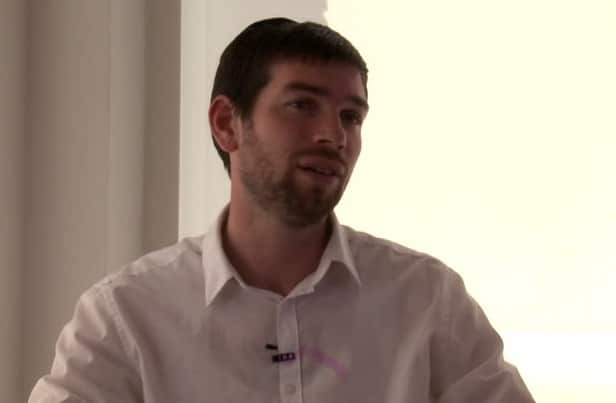


|
|
| 7 | As a summative assessment, students design a bookmark, bumper, sticker, t-shirt, or social media content that speaks to the essential question, “What can we do to make a difference in the face of antisemitism?” Students draw on relevant information and ideas from the featured sources to devise a main slogan for their product and 3-5 brief accompanying phrases that challenge a specific example of antisemitism that they encountered in this unit. Students create their designs individually or in small groups. As an optional follow-up, they can print and distribute their designs to others.
|
The ideas below are offered as ways to extend the lessons in this unit and make connections to related historical events, current issues, and students’ own experiences. These topics can be integrated directly into Echoes & Reflections lessons, used as stand-alone teaching ideas, or investigated by students engaged in project-based learning
| 1 | Students will investigate the scope and scale of antisemitism in the modern world. They begin by defining these key terms (scope is the extent or range of something; scale is the size of something). Utilizing the resources found in The Scope and Scale of Antisemitism handout and the ADL A.T.L.A.S. (Antisemitism Trends, Learnings and Statistics) students create a graph or graphic representation depicting one facet of antisemitism in the United States or globally, such as:
|
| 2 | Using the film, Extremism in America, the corresponding lesson plans from Retro Report, and the Southern Poverty Law Center’s Hate Map, students research one event or hate group tied to white supremacist ideology. Students create a poster, presentation, or other visual representation to present their findings and share with their larger school community. |
| 3 | Reflect on the ways that Jewish people have been scapegoated historically and in current times. Scapegoating in this context means blaming Jews individually or collectively for something, based on stereotypes or prejudices, when in reality Jews are not responsible. Record examples of scapegoating that you have learned about in this or other units of study and choose one example to research further. Make comparisons to other groups that are scapegoated today, identify some of the factors that lead to scapegoating behavior, and discuss how we can respond when we encounter scapegoating in our communities. |
| 4 | In his testimony Henry Oertelt says, “I am the prime example of what can happen to people that are suffering under prejudicial circumstances and biases…and we have to learn to speak up when we see prejudice and hatred.” Write an essay exploring the following questions: Why do you think more people don’t speak up when they witness these types of behaviors? How have the individuals you have been introduced to in this unit, including Henry, helped you think about your role in your own community? |
| 5 | While much media attention is often given to antisemitic and other hateful acts, the efforts of individuals and communities to combat such acts are often less publicized. Research examples of Jewish people and communities that have shown agency and resistance against this type of persecution. Present your findings in a multimedia presentation. |
| 6 | Assign students to complete Awareness to Action: Challenging Antisemitism, a four-part digital learning experience created by ADL and designed to not only unravel the complexities of antisemitism, but to empower the next generation to challenge all forms of bias. This course can help students reshape the narrative about antisemitism, foster deeper understanding of Jews and Judaism, and create a sense of belonging, both inside and outside the classroom. |
Zionism/anti-Zionism




 English
English



